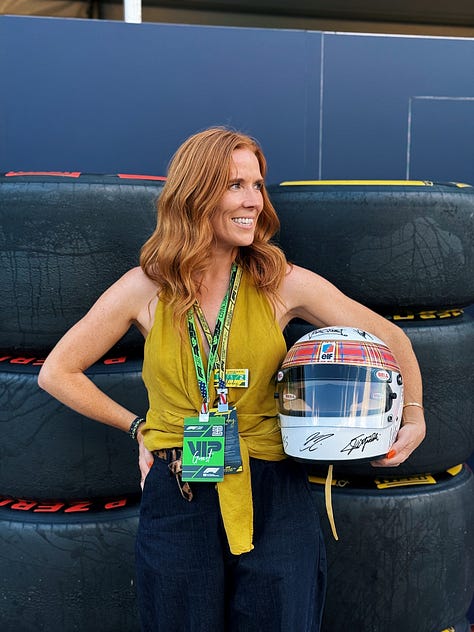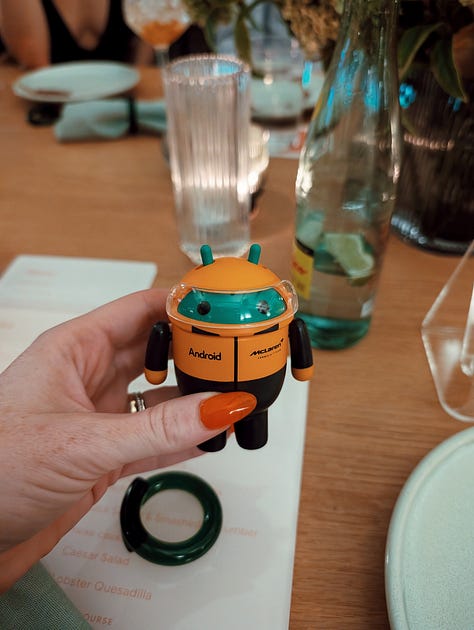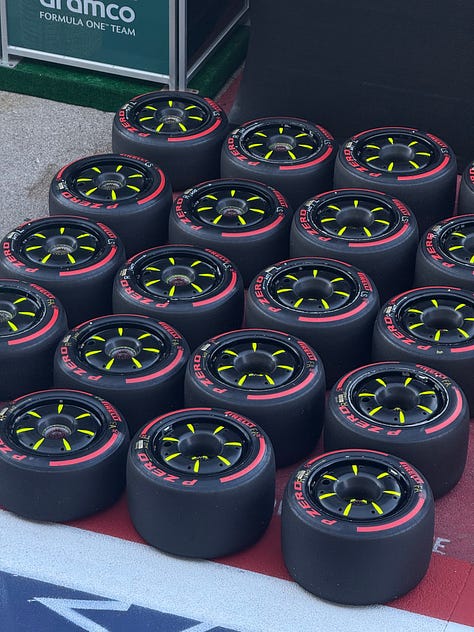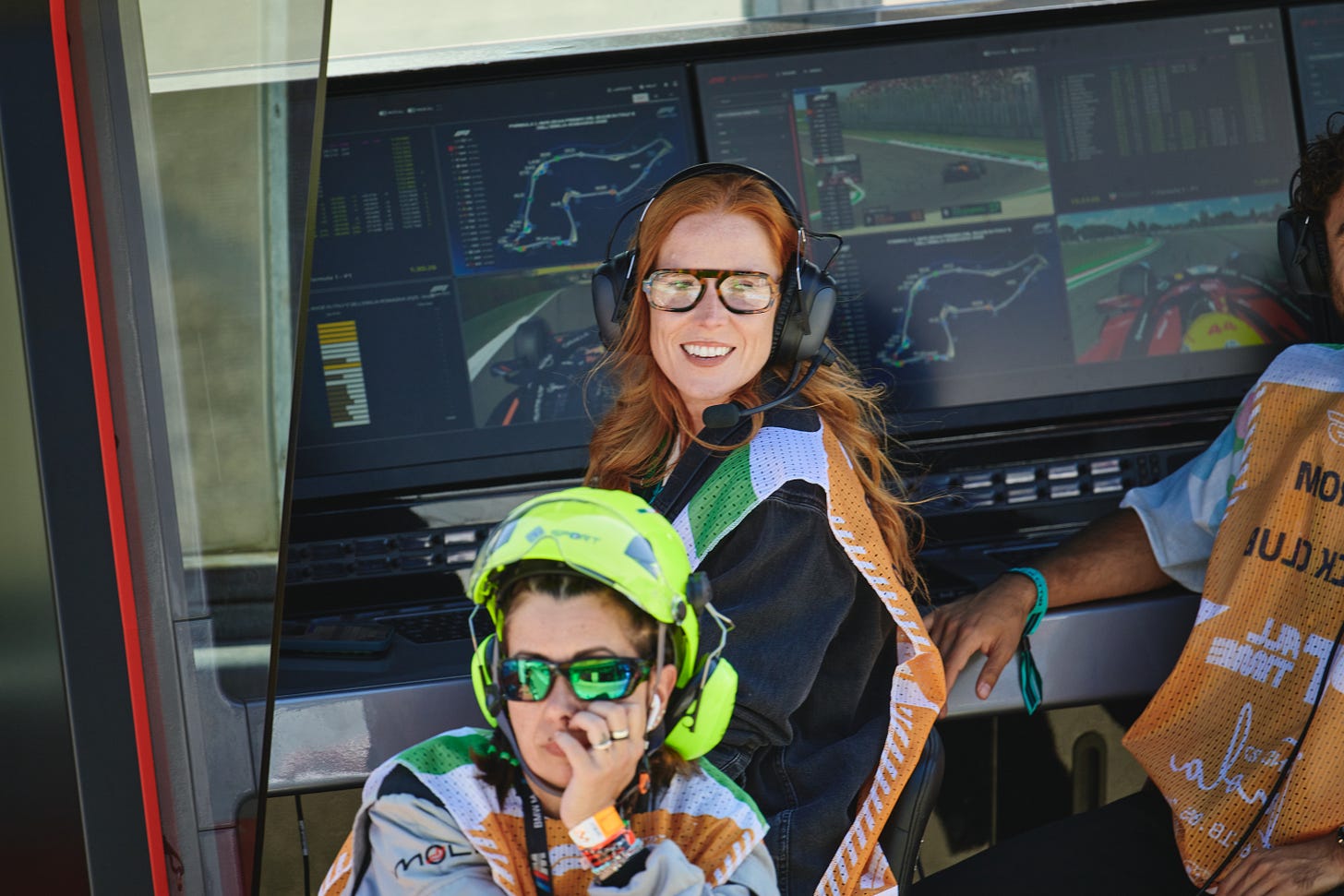The creator paradox: why F1 and tennis are losing Gen Z, while the NBA thrives
It's about attention, not content.
Thank you for being here. You are receiving this email because you subscribed to Idée Fixe, the newsletter for curious minds. I’m Toni Cowan-Brown, a tech and F1 commentator. I’m a former tech executive who has spent the past five years on the floor of way too many F1, FE, and WEC team garages, learning about the business, politics, and technology of motorsports.
⏳ Reading time: 9 minutes
There’s an interetsing irony unfolding in professional sports: the closer you get to the action, the less you’re allowed to share. As a content creator in Formula 1, I’ve experienced this firsthand - the proximity paradox where media accreditation transforms from privilege to hindrance. The moment you receive official credentials, your ability to post organic and engaging content plummets. You’re a fan? Post away. A team guest? Share to your heart’s content. But hold media accreditation? Welcome to a labyrinth of restrictions that would make Kafka proud. Enter in the constantly evolving and growing creator economy and things get murky at best. And as a creator, I’ve said it time and time again, you are better off as a guest of a team than holding any form of official media credentials. However, my experience with the FIA stands as an exception and an example of what could be possible.
This isn’t just an F1 problem. Tennis faces the same dilemma. Both sports are haemorrhaging young fans while sitting on multi-billion dollar media rights deals that, paradoxically, are suffocating the very content that could save them. Both sports right now, are doing pretty well with a massive influx of younger fans paying closer attention to these sports, but they aren’t quite yet the ‘sticky fans’ every series and league is after. Meanwhile, the NBA has cracked a code that seems obvious in hindsight: in the creator economy, your highlights aren’t competition - they’re your best marketing tool.
The restriction industrial complex
Formula 1’s media guidelines read like a legal tongue twister. Accredited media can enter the paddock but are prohibited from accessing team areas without explicit permission. Video content must comply with stringent usage rights. The sport’s intellectual property - from timing data to audio-visual content - is locked behind walls of copyright protection. Even the typefaces are off-limits. Everything is protected, everything is controlled, everything is monetised through traditional broadcast deals.
Tennis operates under a similar philosophy. Despite ESPN paying $2.04 billion to air the US Open through 2037 and Wimbledon commanding $52.5 million annually, the sport maintains draconian social media restrictions. The absurdity? Players - the very people creating the product that media companies pay billions for - can’t even share footage or highlights of themselves. When Coco Gauff, one of tennis’s brightest young stars, has expressed a desire for more social content, she runs headlong into broadcast restrictions designed to “protect” media rights value.
The Australian Open’s 2025 experiment with animated characters replacing live match footage on YouTube - which generated 1.8 million views over six days - perfectly encapsulates the problem. Tennis is so paralysed by media rights concerns that it would rather show cartoon versions of matches than risk cannibalising broadcast value. The irony? The animated version was a hit precisely because it offered something shareable in a sharing economy.
The Gen Z disconnect
Here’s what keeps sports executives up at night: Gen Z doesn’t consume sports the way their parents did. Morning Consult research reveals that only 23% of Gen Z identify as passionate sports fans, compared to 42% of millennials. More troubling, 27% describe themselves as “anti-sports” - a figure that sits in the single digits for other generations.
But this isn’t about shorter attention spans or disinterest in competition. Gen Z is deeply engaged with sports - just not through traditional channels. They prefer “snackable” content, highlights, and behind-the-scenes access. Thirty-two per cent watch live sports through streaming services versus 28% via broadcast or cable. They’re less likely to watch entire games but will spend hours discussing the events on Threads, X and Reddit, and spend even more time watching compilations, reaction videos, and player personalities on IG, TikTok and YouTube.
The disconnect is stark in F1 and tennis viewership demographics. While Formula 1 has gained ground in the US, reaching 52 million fans in 2024, with 47% of new fans aged 18-24 - this growth came primarily through Netflix’s “Drive to Survive,” and the rise and growth of TikTok and the boom of the creator economy, not through expanded highlight access. All these platforms succeeded by doing what F1’s media restrictions prevent: humanising athletes and creating shareable, emotional narratives. NASCAR seem to be looking into this as they just launched a new creator series today, where streamers & gamers will compete in races, games, and more.
Tennis faces similar challenges. The sport’s fragmented media landscape, where watching different tournaments requires different streaming services, cable packages, and subscriptions, creates friction that Gen Z simply won’t tolerate. When a sport makes it this hard to be a casual fan, it ensures it won’t have many fans at all.
The NBA blueprint
NBA Commissioner Adam Silver’s approach to media rights stands in stark contrast to F1 and tennis. In a 2018 interview, he articulated a philosophy that seems radical only because it’s so rare: “We promote the posting of our highlights. The highlights are identified through YouTube’s software, and when ads are sold against them, we share in the revenue.”
Silver understands what tennis and F1 executives apparently don’t: highlights aren’t piracy. Rather, they’re free marketing you literally couldn’t buy. “We recognise that NBA players are the stars, and we treat them as our partners,” Silver has explained. The league actively encourages players to engage on social media, viewing it as complementary rather than cannibalistic to live viewership.
The numbers validate this approach. During the 2021-22 season, the NBA saw a 19% uptick in average national TV viewership despite - or perhaps because of - its widespread social media presence. The league’s 2024-25 creator programme represents its most expansive initiative yet, partnering with over 100 creators to provide behind-the-scenes content at marquee events. Popular streamers like Kai Cenat and creators like Drew Afualo are featured in the league’s campaigns, bringing their millions of followers into the NBA ecosystem.
Most significantly, the NBA has evolved its partnership with WSC Sports to provide select influencers with unprecedented access to over 25,000 hours of game footage and AI-driven editing tools. The results? The Creator Correspondent Programme generated over 650 million video views across NBA social and digital channels last season alone.
This isn’t charity, it’s shrewd business. The NBA has approximately 2.5 billion people globally who “connect with the NBA in some way” through social media. These aren’t all live game viewers, but they’re part of the ecosystem. Some will convert to paying customers; others will buy merchandise or engage with sponsors. All of them represent value that traditional media rights deals simply can’t capture. This isn’t the zero-sum game some series and executives seem to think it is.
The cost of control
The mistake F1 and tennis are making is treating content control as an asset rather than a liability in the creator economy. Their massive media rights deals - Formula 1’s new agreement with Apple TV reportedly worth billions, tennis’s fragmented but collectively enormous broadcast arrangements - are premised on scarcity. If highlights are everywhere, why would anyone pay for full coverage?
But this logic is backwards. Sports are fundamentally different from movies or television shows. No one watches a highlight reel instead of attending a live match or watching a full game they care about. Morgan Riddle, who has been dealing with this, explains perfectly, in her most recent GQ interview, what tennis is missing out on when they take this strict approach:
“I’ve gotten multiple copyright strikes against my account when I post videos of him,” Riddle says. “In the last three years, the tournaments and the tour have gotten really strict with where you can film and where you can’t. I’m not allowed to have a camera in the box anymore, whereas a couple of years ago, none of those rules were in place.”
“The people who make those decisions are thinking one way,” Riddle says, “and I’m thinking, Okay, think about the fan girls, the people who create memes. That’s what builds a cult following in a sport. It’s frustrating, and it’s archaic.”
Highlights create interest; they don’t satisfy it. They’re the trailer, not the movie. The “Drive to Survive” effect proves this: after the docuseries launched, F1’s US average race viewership grew from 500,000 in 2018 to 1.2 million in 2022. Exposure created demand. The restriction-based model also fundamentally misunderstands where sports’ value lies in 2024. Gen Z’s interest in sports isn’t dying, it’s evolving. They want athlete personalities, drama, storytelling, and community. They want to be creators, not just consumers. When 42% of Gen Z became fans of a new athlete in the past year (versus 33% of the general population), they weren’t doing so by watching full broadcasts. They were discovering athletes through TikTok clips, Instagram stories, and YouTube compilations.
By restricting creator access, F1 and tennis aren’t protecting their product - they’re ensuring Gen Z discovers other sports instead. Sports that are more widely accessible in the spaces where Gen Z is hanging out. When a young fan can watch NBA highlights immediately on twenty different YouTube channels, with commentary from their favourite creators, but has to navigate geographic restrictions and platform fragmentation to find tennis or F1 content, the choice is obvious.
The accreditation trap
Perhaps most frustrating is how current media accreditation systems actually punish the most engaged creators. When I’m a fan at a race, I can share my experience freely, but I’m limited on access. As a team guest, I have access and permission to post content that humanises the sport. But the moment I receive media accreditation - supposedly a privilege - I enter a regulatory nightmare and it’s very easy to make a mistake, and they could be costly.
This creates perverse incentives. The most knowledgeable, most professional ‘personalities’ (sometimes with the largest audiences) are the ones most restricted in what they can share. Meanwhile, casual fans can post freely (as they should). The result is that F1 and tennis’s most powerful potential marketing tools - credentialed creators (this is also true for the athletes and broader team members) and personalities with large, engaged audiences - are neutered by the very credentials meant to empower them.
The path forward
The solution isn’t abandoning media rights deals - it’s understanding what those deals are actually selling. Broadcasters aren’t buying highlight reels; they’re buying live, complete coverage with production value, expert commentary, and guaranteed scheduling. These remain valuable regardless of what’s on social media. As a content creator, for example, who doesn’t cover the on-track battles or races, my content doens’t take away from any of this. What F1 and tennis should be selling isn’t content scarcity, but access abundance.
Imagine if Formula 1 adopted an NBA-style (or even NASCAR-style) creator programme. Accredited creators could access a library of race footage, team radio communications, and behind-the-scenes content. They could create reaction videos, analysis, highlight compilations - all clearly branded with F1 marks and all serving as free advertising to their collective hundreds of millions of followers. The sport would maintain control over its intellectual property while embracing rather than fighting the creator economy.
Tennis could transform its fragmented media landscape by treating highlights as marketing rather than product. Key moments could become ten times bigger, reaching ten times more potential fans and spilling over from the existing F1 fandoms and potentially reach new fans.
The NBA isn’t succeeding despite its open approach to highlight, it’s succeeding because of it. In an attention economy where every entertainment option is competing for eyeballs, visibility is victory. The sports that understand this are growing their fanbases and their media rights values simultaneously. The sports that don’t are watching their most valuable demographic - young, digital-native, socially connected fans - choose other entertainment options.
The irony is that both Formula 1 and tennis have incredible products. The racing is spectacular; the tennis is world-class. They have charismatic athletes, compelling storylines, and global appeal. What they lack is the willingness to let their fans - and their credentialed creators - share that story freely.
As someone who’s experienced the restrictions firsthand, I can attest that the current system isn’t protecting value - it’s slowly destroying it. Every piece of content we can’t create because of accreditation restrictions is a conversation not started, a fan not converted, a moment not shared. Multiply that by every missed opportunity at every event, and you begin to understand the scale of the missed opportunity.
The NBA figured out something that should be obvious: in 2025, content is currency, attention is everything, and your highlights working for you beats your restrictions working against you. Until F1 and tennis learn this lesson, they’ll continue to win the battle for media rights dollars while losing the war for Gen Z’s hearts, minds, and viewing hours. And in the creator economy, that’s a race you simply can’t afford to lose.













